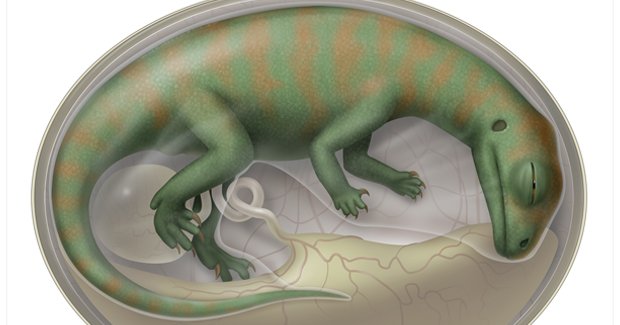Dinosaur embryo fossils give clues on growth

THE OLDEST COLLECTION OF dinosaur embryos ever found has offered an unprecedented glimpse into the early growth of these prehistoric giants.
Australian scientists were among the researchers who unearthed the embryos – some up to 190 million years old and at various stages of development – in Lufeng, China.
“This is the first time we’ve been able to track the growth of embryonic dinosaurs as they developed,” says Robert Reisz, one of the lead researchers from the University of Toronto in Canada.
“Our findings will have a major impact on our understanding of the biology of these animals.”
Embryo of largest animal to walk the earth
The remains were from the long-necked herbivore genus Lufengosaurus, a common type of dinosaur in the Early Jurassic period that measured up to 9m in length when fully grown.
The results, published on Thursday in the journal Nature, reveal that the dinosaurs grew rapidly and flexed their muscles while still in the egg, helping to develop their skeleton.
“This suggests that dinosaurs, like modern birds, moved around inside their eggs,” says Robert. “It presents the first evidence of such movement in a dinosaur.”

The skeleton of the adult dinosaur in Lufeng, China, where 20 embryos were also discovered. (Credit: Eric Roberts)
Robert suspects that their rapid growth ability accounts for the enormity of Lufengosaurus, which was a sauropod and among the largest animals ever to walk the planet.
Eric Roberts, a geologist at James Cook University in Queensland and part of the research team, says dinosaurs are amazingly rare on the fossil record.
Virtually all embryonic dinosaur material discovered up to this point has still been encased within their fossil egg shells, says Eric. “This [find] gives a much clearer idea how fast embryos developed within their eggs.”
200-million-year-old protein found in dinosaur bone
For Eric, the most surprising aspect of the find was the identification of 200-million-year-old organic residue among the bones, which researchers believe to be collagen.
“This is the oldest ever discovery of organic remains in a vertebrate fossil,” says Eric, adding that the find may reveal organic remains in bone to be more common than once thought.
“The bones of ancient animals are transformed to rock during the fossilization process,” Robert adds. “To find remnants of proteins in the embryos is really remarkable, particularly since these specimens are over 100 million years older than other fossils containing similar organic material.”
RELATED STORIES

